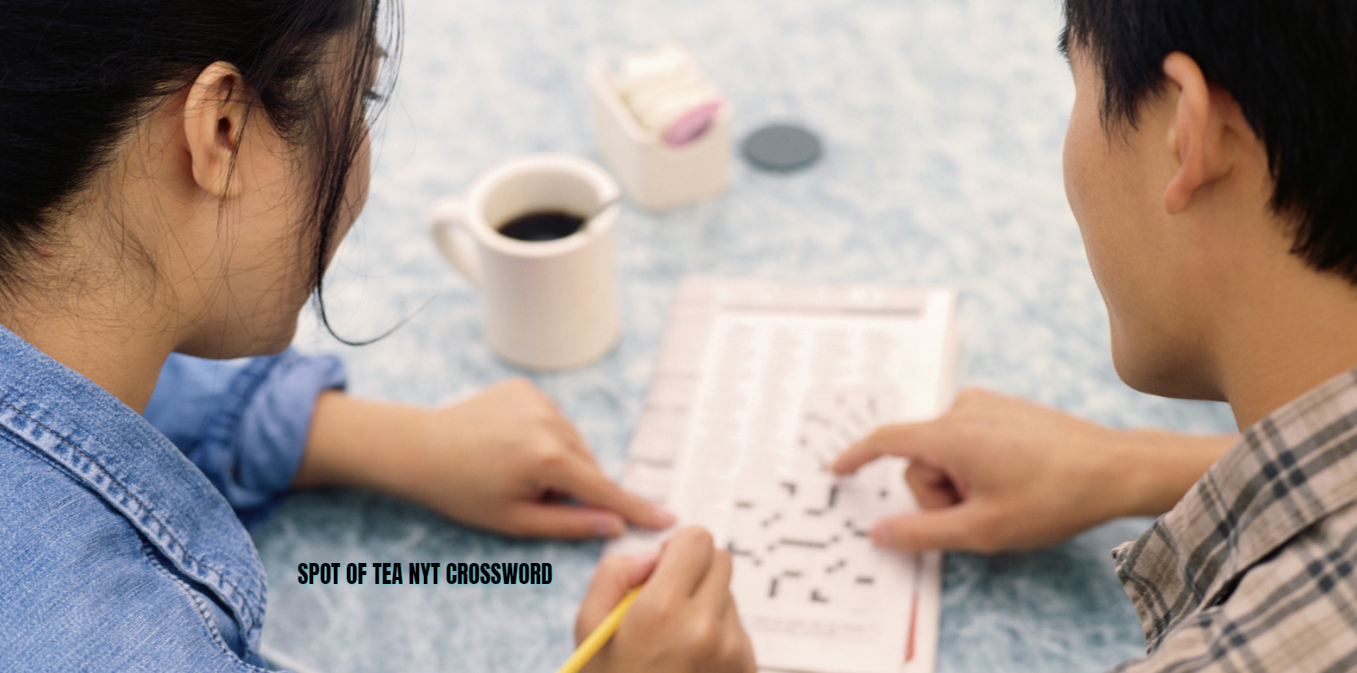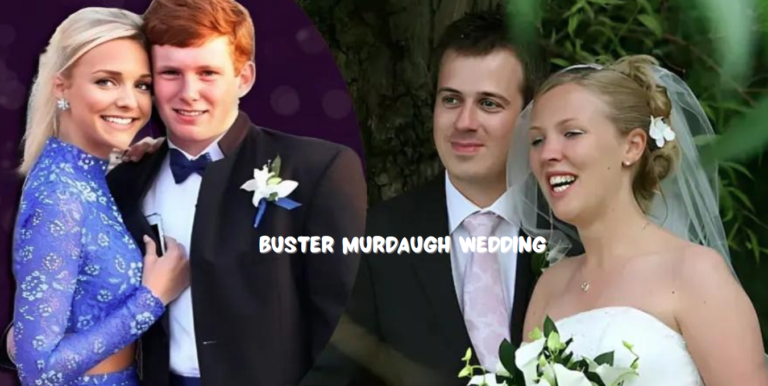Spot of Tea NYT Crossword: A Deep Dive into a Classic Clue
Crossword puzzles have long been a favorite pastime for those who enjoy wordplay, mental challenges, and the satisfaction of solving complex puzzles. Among the many crossword puzzles available, The New York Times Crossword stands out as a benchmark of quality and difficulty, often presenting clues that are both clever and nuanced.
One such clue that has intrigued solvers is “Spot of Tea NYT Crossword.” This article explores the intricacies of this clue, its possible answers, and the broader context within which it appears, providing insights that go beyond the typical explanations.
Introduction to the “Spot of Tea NYT Crossword” Clue
The Significance of Tea in Crossword Puzzles
Tea is more than just a beverage; it’s a cultural icon that has found its way into language, literature, and yes, crossword puzzles. The phrase “Spot of Tea” conjures images of British afternoon tea traditions, making it a popular reference in crossword puzzles, especially in those like The New York Times Crossword, which often incorporates cultural and linguistic references into its clues.
In crossword puzzles, tea-related clues can be both straightforward and deceptively tricky. They often rely on the solver’s familiarity with idiomatic expressions, regional dialects, and even puns. The clue “Spot of Tea” is one such example where solvers are expected to think beyond the literal interpretation and consider various possibilities based on context and wordplay.
Why This Clue Stands Out in the NYT Crossword
The New York Times Crossword is known for its challenging and thought-provoking clues, and “Spot of Tea” is no exception. What makes this particular clue stand out is its blend of simplicity and complexity. On the surface, it seems like a straightforward reference to tea, but it requires the solver to consider idiomatic expressions, cultural nuances, and alternative meanings of the word “spot.”
This clue is also an excellent example of how The New York Times Crossword constructors use familiar phrases in unexpected ways, making it a memorable and satisfying puzzle element for solvers. The NYT Crossword often includes clues that reference common experiences or items, but with a twist that challenges the solver’s assumptions.
Decoding the “Spot of Tea” Clue
Common Misconceptions and First Guesses
When faced with the clue “Spot of Tea,” many solvers might immediately think of common British expressions related to tea, such as “cuppa” (short for “a cup of tea”). This is a reasonable guess, given the cultural association of tea with British traditions. However, in the context of The New York Times Crossword, this initial instinct might lead solvers astray.
Another common guess might be “brew,” as tea is often referred to as a brew. Yet, this too might not fit the crossword grid or the number of letters required for the answer. The challenge lies in thinking beyond the obvious and considering other meanings or synonyms related to the word “spot” and “tea.”
The Correct Answer and Its Meaning
The correct answer to the clue “Spot of Tea” in the NYT Crossword is often “EARL”, referring to Earl Grey tea. Earl Grey is a popular type of black tea flavored with bergamot oil, and “Earl” here is a clever reference to the tea, fitting perfectly within the crossword grid while also adhering to the clue’s requirement for a “spot of tea.”
This solution plays on the solver’s knowledge of tea varieties and requires them to recognize that the clue is not asking for a generic term for tea, but rather a specific type of tea. It’s a prime example of how crossword puzzles can challenge solvers to think more broadly and creatively.
Alternative Answers and Their Context
While “Earl” is a common solution for the “Spot of Tea” clue, there could be other potential answers depending on the crossword’s construction and theme. For instance, the word “BAG” might be used in reference to a tea bag, or “CHAI,” which is a popular type of spiced tea, could be another answer depending on the puzzle’s context.
The key to solving such clues lies in understanding the broader context of the puzzle and considering all possible interpretations of the words involved. Cross-referencing with other clues in the puzzle can also help confirm the correct answer, especially in cases where multiple answers might seem plausible.
The Craft of Crossword Clues: Analyzing “Spot of Tea”
The Role of Wordplay in Crossword Puzzles
Wordplay is at the heart of crossword puzzles, and “Spot of Tea” is a perfect example of how constructors use it to challenge solvers. Wordplay can involve puns, homophones, double meanings, and other linguistic tricks that require solvers to think beyond the literal meaning of the words.
In the case of “Spot of Tea,” the word “spot” can mean a small amount, a place, or even a particular type (as in “spot” meaning a variety), and “tea” can refer to both the beverage and specific types of tea. The interplay between these meanings is what makes the clue both challenging and satisfying to solve.
How Constructors Use Cultural References
Crossword constructors often incorporate cultural references into their clues to add an extra layer of complexity. These references can be anything from popular TV shows, historical figures, and literary works to everyday objects and phrases. “Spot of Tea” is a cultural reference that draws on the global familiarity with tea, particularly in British culture.
By using such references, constructors can make puzzles more engaging and relevant to a broad audience. However, they also make the puzzles more challenging, as solvers must be attuned to a wide range of cultural knowledge and idiomatic expressions.
The Importance of Context in Deciphering Clues
Context is crucial in solving crossword puzzles, as the same word can have multiple meanings depending on how it is used. For “Spot of Tea,” the context provided by the puzzle’s theme, surrounding clues, and the number of letters required for the answer all play a role in guiding the solver to the correct solution.
Understanding the context helps solvers narrow down their options and avoid common pitfalls, such as misinterpreting the clue or jumping to conclusions based on the first meaning that comes to mind. It’s this careful consideration of context that often makes the difference between a correct answer and a frustrating dead-end.
The Cultural and Linguistic Relevance of Tea in Puzzles
Tea as a Cultural Symbol in Crosswords
Tea is a cultural symbol with deep roots in history, literature, and daily life, making it a frequent reference point in crossword puzzles. The “Spot of Tea” clue taps into this cultural significance, using tea not just as a beverage, but as a symbol of tradition, relaxation, and social rituals.
In crosswords, tea-related clues often evoke these broader cultural meanings, challenging solvers to think about tea in both literal and metaphorical terms. This cultural symbolism adds depth to the puzzles and makes solving them a more enriching experience.
The Linguistic Versatility of “Tea” in Wordplay
The word “tea” is linguistically versatile, lending itself to various forms of wordplay in crossword puzzles. It can be used in puns (e.g., “tea time” vs. “T time”), as a homophone (e.g., “T” for the letter T), or as part of a larger phrase (e.g., “spot of tea” or “tea party”). This versatility makes it a favorite among crossword constructors, who can use it to create clues that are both challenging and clever.
In “Spot of Tea,” the word “spot” adds another layer of wordplay, as it can refer to both a location and a small amount, further complicating the clue and making it more rewarding to solve.
Similar Clues in NYT Crosswords and Their Solutions
The NYT Crossword is known for its creative use of common words in unexpected ways, and tea-related clues are no exception. Similar clues to “Spot of Tea” might include “Tea time,” which could lead to answers like “FOUR” (as in the traditional British tea time at 4 PM), or “Tea variety,” which could be answered with “EARL” or “ASSAM.”
By understanding how these clues function and the types of wordplay involved, solvers can improve their ability to decode similar clues in future puzzles. Familiarity with common crossword tropes and themes also helps in recognizing patterns and anticipating possible answers.
Why the NYT Crossword Is Considered the Gold Standard
The Legacy and Prestige of the NYT Crossword
The New York Times Crossword has a long-standing reputation as one of the most challenging and prestigious puzzles in the world. First published in 1942, it has since become a daily ritual for many puzzle enthusiasts, known for its clever clues, cultural relevance, and high level of difficulty.
The puzzle’s legacy is built on the work of skilled constructors who carefully craft each clue and grid to create a satisfying and intellectually stimulating experience. The “Spot of Tea” clue is just one example of the kind of wordplay and cultural reference that has made the NYT Crossword a benchmark for quality in the puzzle world.
What Makes the NYT Crossword Unique
Several factors contribute to the uniqueness of the NYT Crossword. These include the puzzle’s emphasis on wordplay, its use of themes, the incorporation of current events and pop culture, and the rigorous editing process that ensures each puzzle meets the highest standards.
The NYT Crossword is also known for its diverse range of difficulty levels, with puzzles starting easier on Monday and gradually becoming more challenging throughout the week, culminating in the notoriously difficult Saturday puzzle. This progression allows solvers of all skill levels to engage with the puzzle and improve their abilities over time.
How Puzzles Like “Spot of Tea” Reflect NYT’s Approach
Clues like “Spot of Tea” reflect The New York Times Crossword’s approach to puzzle construction, which combines wordplay, cultural references, and linguistic challenges to create a rich and rewarding experience. These puzzles are designed to be more than just a test of vocabulary; they are a celebration of language and culture, inviting solvers to engage with words in new and creative ways.
By offering clues that are both challenging and fair, the NYT Crossword maintains its status as the gold standard in the puzzle world, attracting solvers who appreciate the artistry and skill that go into each puzzle.
Strategies for Solving Crossword Clues Like “Spot of Tea”
Tips for Decoding Tricky Clues
Decoding tricky crossword clues like “Spot of Tea” requires a combination of skills, including lateral thinking, cultural knowledge, and an understanding of wordplay. Here are some tips to help solvers tackle these types of clues:
- Think Outside the Box: Don’t get stuck on the first meaning that comes to mind. Consider alternative definitions, synonyms, and homophones that might fit the clue.
- Cross-Reference with Other Clues: Use the letters from intersecting words to help narrow down possible answers. This can confirm your guesses or point you in a new direction.
- Look for Puns and Wordplay: Many crossword clues involve puns or wordplay, so be on the lookout for double meanings, hidden references, and clever twists on common phrases.
The Importance of Considering Multiple Meanings
One of the most important strategies in crossword solving is to consider multiple meanings of the words in the clue. For “Spot of Tea,” the word “spot” could mean a place, a small amount, or a type, and “tea” could refer to the beverage or a specific variety. By thinking through these different possibilities, solvers can better understand the constructor’s intent and arrive at the correct answer.
How to Use Cross-Checking to Confirm Answers
Cross-checking is a crucial technique in crossword solving. By filling in the answers to intersecting clues, solvers can confirm whether their guesses are correct or identify mistakes that need to be corrected. In the case of “Spot of Tea,” filling in the surrounding clues can help confirm whether “EARL” or another answer is correct, providing confidence in the final solution.
Cross-checking also helps solvers avoid getting stuck on incorrect guesses, as it forces them to consider whether their answers fit with the overall puzzle. This technique is especially useful in more challenging puzzles, where a single mistake can throw off the entire grid.
Comparing “Spot of Tea” with Other Themed Clues
Themed Crosswords and How “Spot of Tea” Fits In
Themed crosswords are a popular feature of the NYT Crossword, where a central theme ties together a set of related clues and answers. “Spot of Tea” could easily fit into a themed crossword centered around beverages, British culture, or even wordplay involving homophones and double meanings.
In a themed puzzle, solvers must not only solve individual clues but also identify the overarching theme that connects them. This adds an additional layer of challenge and satisfaction, as solvers work to unravel the puzzle’s broader structure.
Analyzing Similar Clues and Their Variations
Similar clues to “Spot of Tea” often involve plays on words, cultural references, or idiomatic expressions. For example, a clue like “Time for tea” could lead to an answer like “FOUR” (as in four o’clock, the traditional time for afternoon tea in Britain), while “Tea party” could refer to both a social gathering and the Boston Tea Party, depending on the puzzle’s theme.
Analyzing these variations helps solvers understand the different ways in which common phrases can be used in crossword puzzles, improving their ability to decode similar clues in the future.
The Role of Themes in Enhancing Crossword Difficulty
Themes play a significant role in enhancing the difficulty of crossword puzzles. In themed puzzles, solvers must identify and understand the theme to fully solve the puzzle, as the theme often dictates the answers to key clues. This can make even straightforward clues more challenging, as solvers must think about how the theme influences the meaning of each clue.
For example, in a puzzle with a British culture theme, “Spot of Tea” might be a straightforward reference to “EARL” (as in Earl Grey tea), but in a puzzle with a wordplay theme, the same clue might involve a more complex or unexpected answer. Understanding the theme is therefore crucial to solving the puzzle as a whole.
The Impact of Crossword Clues on Popular Culture
How Crossword Clues Influence Language and Culture
Crossword clues like “Spot of Tea” not only reflect but also influence language and culture. As solvers encounter these clues, they become more attuned to the nuances of language, idiomatic expressions, and cultural references. This, in turn, can shape how they use language in their daily lives, contributing to the evolution of language and cultural awareness.
Moreover, crossword puzzles often serve as a form of cultural commentary, incorporating current events, popular trends, and historical references. This makes crosswords a unique intersection of language, culture, and intellectual challenge, with clues like “Spot of Tea” serving as both a puzzle and a reflection of cultural norms.
The Relationship Between Crosswords and Pop Culture Trends
Crosswords and pop culture are closely intertwined, with puzzles often featuring references to movies, music, celebrities, and other elements of popular culture. This relationship keeps crosswords relevant and engaging for modern audiences, as solvers see their favorite cultural icons and trends reflected in the puzzles they solve.
Clues like “Spot of Tea” tap into this relationship by referencing widely recognized cultural symbols, such as tea, and playing on the solver’s familiarity with these symbols. This connection to pop culture makes crossword puzzles a dynamic and ever-evolving form of entertainment.
The Appeal of Cultural References in Crossword Puzzles
Cultural references add depth and richness to crossword puzzles, making them more than just a test of vocabulary. For solvers, the appeal lies in the opportunity to engage with familiar cultural elements in a new and challenging way. Recognizing and decoding these references provides a sense of satisfaction and reinforces the solver’s connection to the broader cultural landscape.
In the case of “Spot of Tea,” the cultural reference to tea and its associated traditions adds an extra layer of meaning to the clue, enhancing the solver’s experience and making the puzzle more enjoyable to solve.
FAQs About “Spot of Tea NYT Crossword”
What is the most common answer for “Spot of Tea” in crosswords?
The most common answer for “Spot of Tea” in crosswords is “EARL,” referring to Earl Grey tea. This answer plays on the specific type of tea and fits the clue’s requirements in many puzzles.
Why do crossword puzzles often include tea-related clues?
Tea-related clues are common in crosswords because tea is a widely recognized cultural symbol with multiple linguistic and idiomatic associations. Its versatility in wordplay makes it a popular choice for constructors looking to challenge solvers.
How difficult is the “Spot of Tea” clue compared to other NYT clues?
The difficulty of the “Spot of Tea” clue can vary depending on the context of the puzzle and the solver’s familiarity with tea-related references. It is generally considered moderately challenging, as it requires solvers to think beyond the literal meaning of the words.
Are there other common tea-related clues in the NYT Crossword?
Yes, other common tea-related clues in the NYT Crossword include “Cuppa” (referring to a cup of tea), “Brew” (as a synonym for tea), and “Chai” (a type of spiced tea). These clues often involve wordplay and cultural references.
How can I improve my crossword-solving skills for clues like “Spot of Tea”?
To improve your crossword-solving skills, practice regularly, expand your vocabulary, and familiarize yourself with common crossword tropes and themes. Paying attention to wordplay, idiomatic expressions, and cultural references will also help you decode tricky clues like “Spot of Tea.”
What resources are available for learning more about crossword puzzles?
There are many resources available for learning more about crossword puzzles, including books, online courses, and websites dedicated to crossword-solving strategies. The New York Times Crossword app also offers tutorials and tips for solvers of all levels.
Conclusion
The “Spot of Tea NYT Crossword” clue is a prime example of the clever wordplay and cultural references that make The New York Times Crossword a beloved and challenging puzzle.
Understanding the nuances of this clue requires a blend of linguistic knowledge, cultural awareness, and lateral thinking, making it both a satisfying and educational experience for solvers.
Wordplay is at the heart of what makes crosswords such an engaging and enduring form of entertainment. Clues like “Spot of Tea” not only challenge solvers but also enrich their understanding of language and culture.
As you continue to explore crossword puzzles, remember that the joy of solving comes not just from finding the correct answer, but from appreciating the artistry and creativity that goes into each clue.






